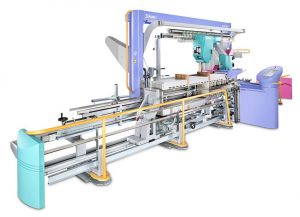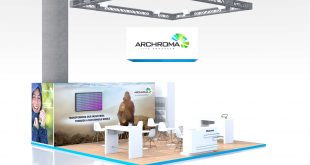 Whether standard or fancy, denim fabrics are in demand – but they are a low-margin product. That’s why Stäubli offers specialized equipment for high-efficiency denim production. The broad range of machinery and systems covers production stages from automated weaving preparation to shed formation. With ultra-high weaving speeds and short downtimes, Stäubli equipment excels when it comes to efficient production in the competitive denim market.
Whether standard or fancy, denim fabrics are in demand – but they are a low-margin product. That’s why Stäubli offers specialized equipment for high-efficiency denim production. The broad range of machinery and systems covers production stages from automated weaving preparation to shed formation. With ultra-high weaving speeds and short downtimes, Stäubli equipment excels when it comes to efficient production in the competitive denim market.
The demand for denim fabrics in every format persists even during economic slowdowns. Denim remains highly popular; it is present in the collections of virtually every global fashion brand, from low-cost labels to top designers. To survive in the competitive world of denim weaving, the mill must optimize its process steps to save time, enhance quality, and maximize production. That’s why Stäubli has developed a range of high-performance equipment for denim production.
In the weaving-preparation department, the SAFIR drawing-in machines draw warps automatically and in one stroke into the reed, drop wires, and healds, with up to 20 weaving frames. The result is a quickly and completely drawn-in weaving harness with perfectly aligned yarns, which streamlines the downstream weaving process. This high-quality result is made possible by Stäubli’s ingenious Active Warp Control (AWC) system, with standard features such as double-end detection and options such as S-Z detection. For easy start-up of drawing in, SAFIR features Initial Conditions Settings (ICS), options that adapt the machine’s behavior to specific yarn characteristics such as coarseness or hairiness. Besides providing very high drawing-in performance, the broad SAFIR range allows maximum flexibility in terms of application and in the placement of the system within the existing space. It is easy to integrate into the mill because it can be optimally adapted to the material flows.
Once the prepared weaving harness has been linked to the weaving machine, the weaving process, based on the appropriate shed formation, can start. Crucial aspects of this step are downtime, yarn treatment, and especially the speed of the weaving machine, which must be coordinated with all other operating components, such as the shed-formation machinery. Here Stäubli shines again with its S1600/S1700 cam motion series and the dobby range versatility in terms of pattern complexity. With the recently introduced S1792 cam motion, the company offers an efficient solution for continuous weaving – at a low total cost of ownership.
Available with up to 10 levers, Stäubli cam motions give the weaver increased flexibility in terms of bindings as well as greater security during high-speed weaving. Stroke forces acting on the warp yarns can be applied through multiple frames, which allow this machine to achieve unprecedented weaving speeds. The high-quality cams, with various profiles adapted for denim weaving, support frame movement and enhance the delicate handling of the warp yarns. The advanced operational concept of the S1792 cam motion makes for minimum maintenance requirements for the cam motion itself and for the high-quality harness motion, the link to the weaving machine – which further enhances the high-performance operation of this machine.
There are some 20,000 Stäubli shed-formation solutions (cam motions and dobbies) in operation in Turkish weaving mills today. This significant presence illustrates the strong reputation of Stäubli’s machinery and services in the Turkish market. Local teams cover the entire country to provide fast and dependable support whenever needed –and the availability of original Stäubli spare parts is ensured even years after purchase. Offering a full range of advantages, Stäubli is a proven partner for denim weavers.
 Tekstil Teknik Dergisi Tekstil Haberleri, Tekstil Sektörü, Tekstil Teknik
Tekstil Teknik Dergisi Tekstil Haberleri, Tekstil Sektörü, Tekstil Teknik




